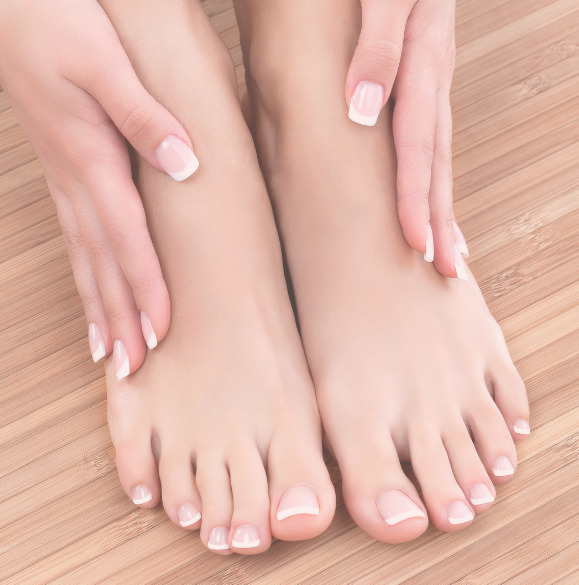Your Nails And What Are They Telling Us
Our nails tell us a lot about our overall health. Paying attention to anything on or around our fingernails or toenails that suddenly or gradually begin to appear different? Early intervention is key.
We could ask? If nails are so important why are they not made of something more permanent? — Such as the hardy enamel casing protecting our teeth?
If a nail is damaged or destroyed a constantly replenishing nail benefits us in the fact that trauma or damage to the nail can usually be ‘grown out’ and fortunately nails can also regrow after avulsion injuries. After 9-15 months we should have a full toenail that has regrown – although it may not grow back exactly the same as a pre traumatised nail we at least have a new shield again for the underlying tips which are packed with thousands of nerves transforming them into highly sensitive tools for detecting the world around us.
Nail disease can influence the health, strength, and appearance of our fingernails and toenails. They can change in shape, colour, and strength based on your overall health and well-being. Nail changes could be a sign of an infection or underlying systemic disease.
Curiously during the height of covid we saw anecdotal evidence of finger and toenail cases having thickened to up to 5 times their original form. Nail conditions have the potential to deteriorate over time and can dramatically affect daily function resulting in a reduced quality of life if left untreated. From Browns University author unknown although it is not exhaustive of course we thought it was a nice overview of some of the nail conditions we see.
List of Nail Diseases
The following are diseases that commonly affect the nails:
- Trachyonychia is a disorder of the nail unit that is also refers to ‘rough nails’
- Pitting in Psoriasis is caused by an overactive immune system and nails may have irregular pits, oil spots, and thickening and crumbling of the nail plate.
- Pitting in Alopecia Areata is a condition that appears to have nail pits that form a geometric pattern.
- Lichen Planus causes scarring with early nail ridging and splitting, later leading to scarring and pterygium formation.
- Darier Disease is characterized by longitudinal, subungual, red or white streaks, or both, and associated with distal wedge-shaped subungual keratoses.
- Beau’s lines show linear depressions in the nails that run horizontally and then move up from the base of the nail as it grows outward.
- Onycholysis happens when the nail separates from the nail bed, raising itself up away from the toe or finger.
- Onychorrhexis may have several splits that cause triangle tears on the edges.
- Onychomadesis is the proximal separation of the nail plate from the nail matrix and is caused by trauma or injury, systemic disease, infection, drug use, radiation, or chemotherapy.
- Onychoschizia is a condition that causes horizontal splits within the nail plate.
Other Nail Diseases:
- Leukonychia refers to the white discoloration of nail and the white color can be due to nail plate or nail bed abnormalities.
- Nail clubbing occurs as the end portion of the nail raises up and rounds out and it can be a sign of an underlying disease.
- Brachyonychia or racquet nail refers to a short nail in which its width is greater than its length.
- Onychogryposis or Ram’s horn nails is characterized by an opaque, yellow-brown thickening of the nail plate with associated gross hyperkeratosis, elongation, and increased curvature.
- Nail Pterygium is a disorder that occurs by an overgrowth of the proximal nail fold on to the nail bed. It can be dorsal or ventral.
- Splinter hemorrhages occur when small blood vessels called capillaries under the skin beneath your nail (nail bed) burst due to damage.
Many diseases can affect the nails. Treatments typically involve preventing further nail damage and treating the underlying condition.
Symptoms
Consult a podiatrist if you are worried about any of the changes:
- changes in nail shape, such as curling or clubbing
- discoloration, such as dark or white streaks, or other changes in color
- changes in thickness, such as thinning or thickening of nails
- brittle nails
- pitted nails
- redness around nails
- swelling around nails
- pain around nails
- bleeding around nails
- nails that are separating from the skin
Hence, you should pay attention to any changes or problems in your nails.
Our highly skilled Podiatrists can provide a holistic assessment of your nail concerns as well as provide a tailored treatment plan to assist your nail health but more importantly your overall health and well-being.
Are you suffering from any nail condition? At The Chelsea Clinic, we can help. One of our podiatrist can assist and then recommend what treatments are best to get you back on track.  Podiatrist South Kensington
Podiatrist South Kensington
Schedule an appointment here or you may call us at +44 (0) 207 101 4000. 
We hope you have a feetastic day! 

-The Chelsea Clinic and Team


 Podiatrist South Kensington
Podiatrist South Kensington




